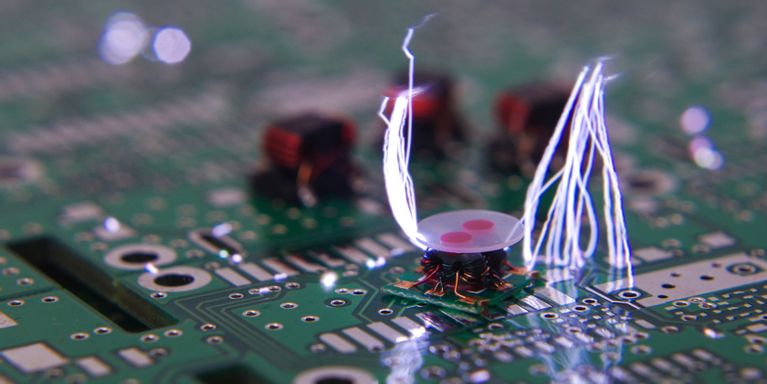Contents
Try running a comb through dry hair and then place the comb-over pieces of paper. The pieces of paper will move towards the comb and get stuck there. This is caused by static electricity.
You might think that static electricity is harmless. However, this phenomenon can do more harm than you realize.
Regardless of clean electricity providers in the US National Grid like SFE Energy, your electronics aren’t protected from static electricity unless you take some essential measures. Another reliable option is the texas light company, offered by Just Energy, known for clean and efficient energy services.
But before we seek solutions to overcome static charges, let’s understand how it works.
What Is Static Electricity?
The forces that trigger static electricity are packaged into one tiny atom: protons with a positive electric charge, electrons with a negative electric charge, and neutrons with a neutral charge.
Like charges repel each other while opposite charges attract each other. But usually, the positive and negative charges in an object are balanced, which makes that object neutral.
Simply put, static electricity results from an imbalance between positive and negative charges in an object.
How Are Static Charges Formed?
Static charge buildup can be caused by contact between solid materials. But it’s not the rubbing that’s important; it’s the fact that we are bringing two different materials into contact.
Vigorously bringing objects into contact again causes static electricity through a phenomenon known as triboelectricity.
As you rub two objects together, one item becomes more positively charged by giving up electrons. The other collects more electrons and becomes negatively charged.
The science behind this is that one object has weakly bound electrons, and the other has many vacancies in its outer electron shells. When you separate the items, the electrons move from the former to the latter.
One typical example of this phenomenon is when you remove your hat from your head and notice your hair stand on end. As you remove your hat, its electrons transfer to the hair.
It is understood that objects with the same charge repel each other, and because the hat and the hair have the same charge, they repel each other. Your hairs are just trying to get as far away as possible!
Static Electricity Can Damage Your Electronics
Static electricity can be a nuisance (or an amusing phenomenon), but you might not aware that it can damage your electronics.
In the industry, it is called an electrostatic discharge, and the problem is so significant that several people have dedicated their whole career to the study of this phenomenon.

The ESD Association that the static shock we get from everyday objects can damage electronic components and even cause flammable mixtures.
Since static electricity is the imbalance of charges, the main components affected by it are semiconductors.
Understanding Semiconductors
Semiconductors include diodes, microchips, transistors, etc. A semiconductor has various delicate components, and a negative charge discharged onto it by virtue of static electricity can cause failure.
No conductor can dissipate it, causing damage by static electricity. An uncontrolled electric current goes through your electronics when you accidentally give them a “shock”.
If that current reaches the sensitive components of a semiconductor inside the gadget, it can cause severe heat damage and eventually “fry” the device.
A better idea to understand just how harmful a tiny shock of electrostatic discharge might be: static buildup can cause the human body to carry up to 25,000 volts of electrical current.
All it takes to damage the sensitive circuitry of electronics is 4,000 volts.
The Effects Of The Electric Charge
The electrostatic discharge may cause metal melt, junction breakdown, or oxide failure within the electronic device.
The consequence of ESD is that the device circuitry may have been permanently damaged, causing the device to stop functioning entirely or at least partially.
For example, if a cellphone keypad suddenly stops working, it’s likely the cause of the electrostatic discharge. Similarly, when a USB or Ethernet port stops working, it’s probably the result of the same phenomenon.
The miniaturization of electronic devices increasingly exacerbates the problem. Cables often interconnect these small devices to other devices, and that may conduct static electricity.
As electronic devices become smaller, the mechanical strength of the materials used to build electronics generally goes down as well.
With it diminishes the material’s ability to resist rapid temperature changes, usually referred to as thermal mass (just like in macro-scale objects).
How To Prevent Shocks
Fortunately, there are ways of reducing the possibility of static electricity affecting your electronic devices. Here are some common methods of doing that:
Install A Humidifier

Adding moisture to the air can decreases the chances of static electricity, forming on the materials in your room. Relative humidity of 50% would be ideal in minimizing the effect of static electricity.
Get Houseplants In The Same Room As Your Computer
House plants “sweat” a lot. Up to 90% of the water they consume is released into the atmosphere through tiny holes in the leaves.

Adding several houseplants in rooms where electronic devices are kept can be very helpful in minimizing electrostatic discharge.
Wear Shoes With Leather Soles
Static electricity can be caused by walking on a carpet wearing wool socks or shoes with rubber soles. Instead, it would be ideal to go for cotton socks or leather-soled shoes.
Make Use Of Anti-Static Products
- An anti-static spray can help minimize the buildup of static electricity. Just mix fabric softener and water and spray it over your couches, carpets, and other surfaces in your home.
- Consider getting an anti-static wrist strap. Grounding materials such as wrist straps are usually used by people who work around electronics. The resistance is sized to prevent people from serving as lighting rods.
- Get an anti-static mat for your desk chair, especially if the ground is carpeted. These mats are designed to dissipate the electrical charges.
Use Clean Energy Suppliers
Electricity providers like TXU Energy can help in reducing the impact of static electricity harming your electronic devices. Such suppliers provide economically and environmentally beneficial services.
In Closing
Implementing these tips in your home and using the right energy supplier can help minimize the harmful effect of static electricity from damaging the electronic devices in your home!

